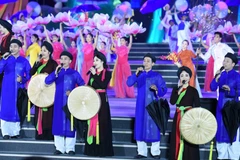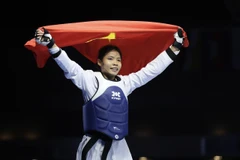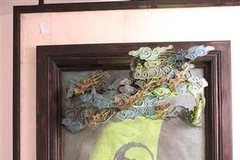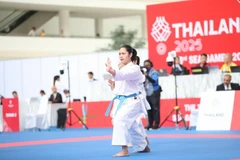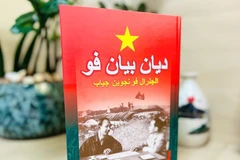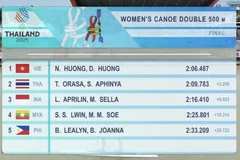Uniqueto the coastal central region, bai choi is often seen at local springfestivals and resembles a game, using playing cards and village huts.
The stage for bai choi performancesencompasses nine cottages, each containing five or six ‘players’. One ofthe cottages, the central house, contains a troupe of musicians andinstruments. A deck of playing cards is split in half, with one stackdistributed amongst the players, and the other placed in the centralhouse. The cards are stuck onto bamboo poles and erected outside thecottages.
The game singer delivers a flag toeach cottage, all the while singing bai choi, and then draws a cardfrom the central house. Whoever holds the card closest in value to thegame singer’s card wins.
The bai choi songs are about festivals, daily life and work, and are accompanied by musical instruments.
The game and songs were developed by Mandarin Dao Duy Tu (1572-1634)to help locals protect their crops, according to Hoang Chuong, Directorof the Centre for Preservation and Promotion of National Culture.
The Vietnam National Academy of Music and the Department ofCulture, Sports and Tourism of Binh Dinh, the cradle of bai choi, havebeen tasked with the preparation of the application dossier, which is tobe submitted prior to March 31, 2015.
Studies on bai choi willbe conducted in 11 central provinces ranging from Quang Binh to BinhThuan to provide information for a database.
Vietnam iscurrently home to eight UNESCO intangible heritages, namely Hue's royalcourt music, the space of Gong culture in the Central Highlands, Quan ho(love duet) singing, the Giong festival, Ca Tru ceremonial singing,Xoan singing, Worshipping the Hung Kings, and Don ca tai tu (amateursinging).-VNA

